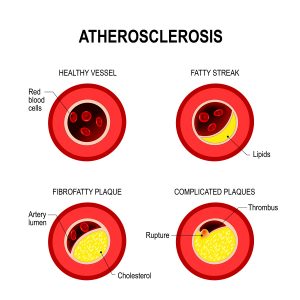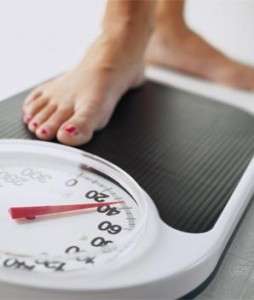Many times we hear terms like LDL and HDL cholesterol , but what lowers LDL cholesterol? We have to go back to a time when the ongoing Framingham Heart Study wanted to find out what caused a heart attack or a stroke. In the 1960’s scientists found out that cigarette smoking increased heart attack risk and also blood cholesterol. Then in the 1980’s the news came out that HDL (high density lipoproteins) reduced the risk of heart disease. Eventually several research institutions agreed that LDL (low density lipoproteins) was the culprit for causing plaque deposits in arteries. This caused heart attacks and strokes. LDL is often referred to as the “bad” cholesterol.
Clarification of HDL and LDL cholesterol
Recently a review article asked the question: “What is the difference between HDL and LDL cholesterol?”
Below I will review what LDL and HDL cholesterol do in our system. I will also mention normal values for blood tests. This will help you to understand your own blood test results. Then I will review what you can do to lower LDL cholesterol and to increase HDL cholesterol.
The function of LDL and HDL cholesterol
Total cholesterol in the blood contains LDL cholesterol, small dense LDL cholesterol and HDL cholesterol. The small dense LDL cholesterol is more dangerous than LDL cholesterol. It infiltrates the lining of the arterial walls aggressively. A normal LDL level is less than 100 mg/dL. When triglycerides, another form of lipid is high in the blood, LDL cholesterol forms a lot more small dense LDL cholesterol. This is the case in diabetics or in obese people. It is the reason why they are very vulnerable to develop heart attacks and strokes. The optimal range for triglycerides is less than 80 mg/dL.
HDL cholesterol is protective from hardening of the arteries and protects you from heart attacks or strokes. HDL dissolves LDL cholesterol, brings it to the liver, and the liver excretes it into bile. You want to have more than 60 mg/dL of HDL cholesterol in your blood.
Cholesterol math
The total cholesterol conventionally is calculated like this:
LDL cholesterol + HDL cholesterol + (triglyceride/5) = Total cholesterol
You see that the small dense LDL is not part of it here, but high triglyceride levels would increase the total cholesterol value as the inclusion of 20% of triglycerides in this equation compensates for this.
There is also a ratio of total cholesterol to HDL cholesterol that is important. This ratio should be below 3.4 for both women and men. This is also known as the ½ average risk for a heart attack or stroke. If your value is equal to that or below, you are in a very low risk category to get a heart attack or stroke.
Now I will deal with the question: what lowers LDL cholesterol?
What lowers LDL cholesterol?
Now we need to review what can be done to lower an LDL cholesterol which is too high. Don’t tell me that you want to take one of the statin drugs. These drugs have serious side effects and are only indicated for the most serious cases of high cholesterol values.
Most common measures to reduce LDL cholesterol
-
Cut out red meat
First of all, cutting out red meat (like beef, pork and sausages) to an absolute minimum, for instance once per week or less is important. The reason is that these meats have more cholesterol in them and also more saturated fats than any other foods. Compare that to poultry, fish and vegetables like beans, which are healthy food sources.
-
Eliminate trans fats
Furthermore, we need to eliminate trans fats as they are causing heart attacks. There is an important difference between ruminant trans fats and artificial trans fats. Ruminant trans fats have been part of the human diet for millennia like milk fat and fat from cows that are on pasture or lamb. Milk products for instance contain fat with 2-5% natural trans fats. 3-9 % of the fat in beef and lamb consists of natural trans fats. Studies have shown that the body is able to handle these natural trans fats, and heart attacks are not more frequent in people eating moderate amounts of these products including butter from cows that graze on pasture.
-
Artificial trans fats
Quite the opposite is true for artificial trans fats in margarine that comes from vegetable oil. Avoid bakery items like sweet pieces or muffins and other products that contain hydrogenated oils. Read labels! Use olive oil or coconut oil, but avoid vegetable oils like corn oil, safflower oil or grape seed oil to get away from trans fats and unstable oils that turn rancid. Rancid oils contain free radicals that oxidize LDL cholesterol and attack the lining of your arteries through small dense LDL cholesterol.
-
Cut out sugar and starchy foods
Another important item is to cut out sugar and starchy foods because these will raise your LDL cholesterol and triglycerides, which also leads to hardening of your arteries. Starchy foods are broken down by pancreatic juices into sugar, which enters your blood stream, causing an outpouring of insulin from the pancreas. When the short-term storage of sugar as glycogen is exhausted in muscle and liver tissue, the liver has to process any surplus of sugar that is still there. The end results are triglycerides and LDL cholesterol. Unfortunately the protective HDL cholesterol does not reach higher levels, when the LDL cholesterol is increased. A persistent diet of high-refined carbs will increase the risk for heart attacks and strokes. It follows from this that we are all better off cutting out sugar and starchy foods from our food intake as it will reduce LDL cholesterol and small dense LDL cholesterol.
-
Increase your soluble fiber intake
Increase your soluble fiber intake by eating vegetables, oats and oat bran, lentils, fruits and beans. Why does this decrease LDL cholesterol? The liver tries to eliminate too much cholesterol by binding it to bile salts and excreting it into your small bowel. But the last part of the small bowel reabsorbs some of these bile salts, and from there they return to the liver. This is called the enterohepatic pathway of bile salts. Soluble fiber intake binds those bile salts and prevents re-absorption in the enterohepatic pathway, eliminating cholesterol safely in stool. Clinical trials have also shown that soluble fiber from psyllium, pectin, beta-glucans and others reduce LDL cholesterol by binding bile salts in the gut (interrupting the enterohepatic pathway).
-
Plant sterols and fiber supplements
Plant sterols (usually sold as sterol esters) are recognized by the FDA as reducing the risk of coronary heart disease, if taken in high enough amounts (2.4 grams of sterol esters per day). There are other useful supplements like artichoke extract, pomegranate, soy protein, Indian gooseberry (Amla), garlic and pantethine (vitamin B5) that are beneficial in terms of prevention of heart attacks and strokes. It would be too lengthy to get into more details here.
-
Take a whey protein supplement
There are two major milk proteins, whey and casein. Only whey protein binds to total and LDL cholesterol, lowering both. It is available in health food stores. Follow the package insert of the whey product for dosing.
-
Increase your omega-3 fatty acid intake
Omega-3 fats naturally present in fish oils and nuts. They increase the amount of circulating HDL cholesterol, which binds the bad LDL cholesterol. Go ahead and eat salmon, herring and mackerel as well as walnuts, ground flaxseeds and almonds. You can also take molecularly distilled (or pharmaceutically pure) EPA/DHA supplements. This pure form of fish oil is free of mercury and other heavy metals. EPA stands for eicosapentaenoic acid or omega-3 fatty acid. DHA is the acronym for docosahexaenoic acid, an important supplement for the brain. Tests have shown that fish oil supplements at a dosage of 3.35 grams per day of EPA plus DHA reduce triglycerides by up to 40%, equally to Lipitor, but without the statin side effects. The end result: your total cholesterol/HDL ratio decreases, as does the risk for heart attacks and strokes. Here is a review of other oils in your diet.
Measures that will increase HDL cholesterol
-
Eat foods with anthocyanin
In a 24-week study with diabetic people HDL levels rose by 19% when food was eaten that was rich in anthocyanin. This consisted of eggplant, purple corn, red cabbage, blueberries and blackberries. The advantage of raising the HDL cholesterol level is that the total cholesterol to HDL ratio decreases, which lowers the risk for heart attacks and strokes.
-
Exercising regularly
Exercising will increase your HDL cholesterol, which again decreases the ratio of total cholesterol to HDL cholesterol. This number should be between 1 and 3.5, the lower, the better.
-
Take a supplement called Ubiquinol, or Co-Q-10
Adults above the age of 60 need 400 mg once daily, younger people need between 200 mg and 300 mg daily. Co-Q-10 prevents oxidation of LDL cholesterol, which would aggressively attack the arterial walls causing hardening of the arteries. What causes oxidation of cholesterol? The answer is clear: fried foods like french fries or deep fried chicken will lead to oxidation; other culprits are margarine, commercially baked goods and cigarette smoking.
-
Calcium and vitamin D3
Recently a study on postmenopausal and overweight or obese women found that supplements of calcium combined with vitamin D3 lowered cholesterol.
-
Polyphenols
Flavonoids are the largest group among the polyphenols in such common foods as vegetables, fruits, tea, coffee, chocolate and wine. Over 130 studies on humans have shown improvement of the lining of the arteries (endothelial functioning) and lowering of blood pressure. Polyphenol consumption has a connection to a lower risk of mortality from heart attacks. Eat a Mediterranean type diet or a DASH diet, and you will automatically get enough polyphenols with your food. However, resveratrol, the powerful red wine polyphenol, warrants a separate daily supplementation as it prevents LDL oxidation in humans (Ref.1). Take about 250 mg of resveratrol daily.
-
Niacin/ nicotinic acid
This supplement comes as “flush-free niacin” and also as extended release niacin. It can raise the beneficial HDL cholesterol by 30 to 35% when patients take higher doses of 2.25 grams per day. In a metaanalysis of 7 studies researchers found a significant reduction of heart attacks and transient ischemic attacks. These are precursor syndromes before developing a stroke. Niacin can change the small particle LDL into a large particle size LDL, which is less dangerous. Niacin also reduces oxidation of LDL, which stops the atherosclerotic process. For a healthy person 500 mg per day of flush-free niacin is adequate.
-
Curcumin
This is a powerful heart and brain protector combining three different mechanisms in one. It is reducing oxidative stress. But it is also an anti-inflammatory. In addition it counters the process that threatens to destroy the lining of the arteries. One study on healthy volunteers showed reduction of 33% in lipid oxidation, a 12% reduction of total cholesterol and an increase of 29% of the protective HDL cholesterol when patients took 500 mg of curcumin for only 7 days (Ref.1). This is the daily dose I would recommend for prevention of heart attacks and strokes.
-
Vitamin E (tocopherols)
This fat-soluble vitamin is an antioxidant and in the past health practitioners knew about its use as being heart supportive. Strangely enough some conservative physicians bad-mouthed this vitamin. In the meantime health practitioners have returned to using the vitamin. It turns out that there are 8 different types of tocopherols, with the alpha tocopherol being the best-known, but you also want to be sure that you are getting gamma tocopherol with your balanced vitamin E supplement every day. Newer research has shown that tocotrienol is more powerful than tocopherols. I take 125 mg of tocotrienols daily.
Conclusion
Over the years cardiovascular researchers have accumulated knowledge about supplements that will reduce LDL cholesterol or increase HDL cholesterol. It has practical value: you can look at your own lab results and choose what fits your situation best. You should always make these decisions together with your health care provider. None of the methods reviewed here have any serious side effects. On the other hand statins, as I have reviewed in the link provided, do have significant side effects. Keep in mind that cholesterol is a normal body component that our body needs to make human cell walls. But we do not need to smoke (stopping it lowers LDL cholesterol). We need regular exercise (increases HDL cholesterol). Keep your cholesterol and triglyceride values within the normal ranges that I listed and as a result you will do well in terms of preventing heart attacks and strokes!










